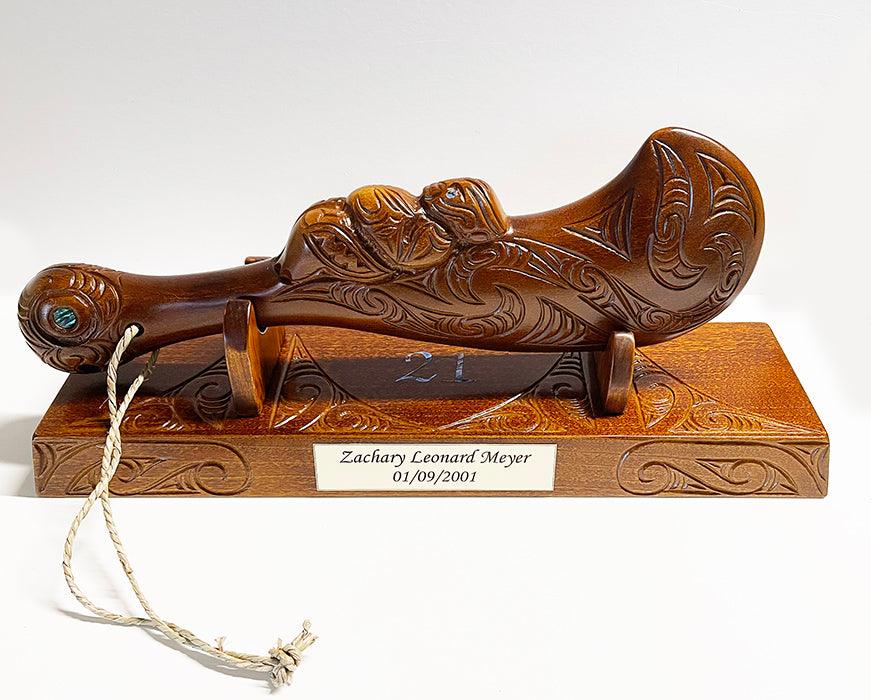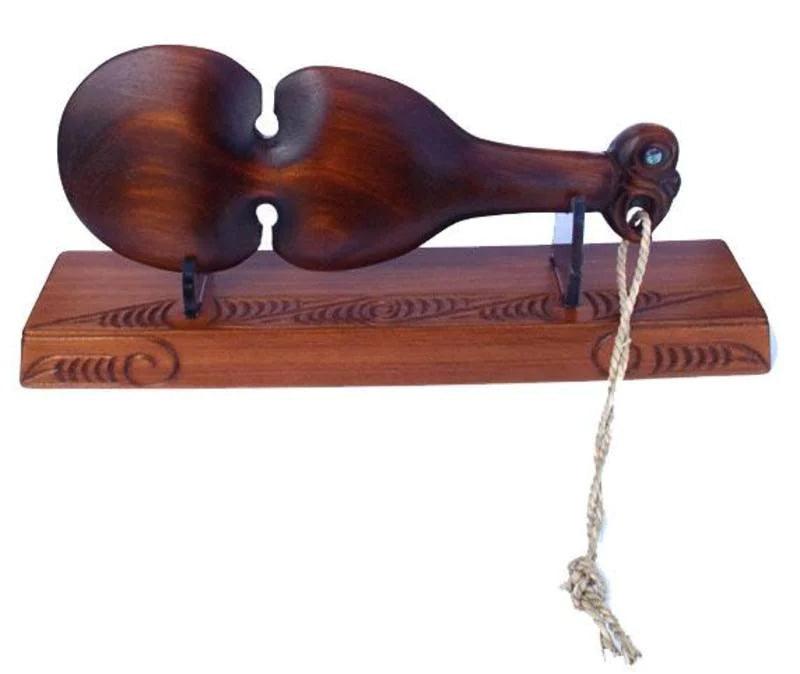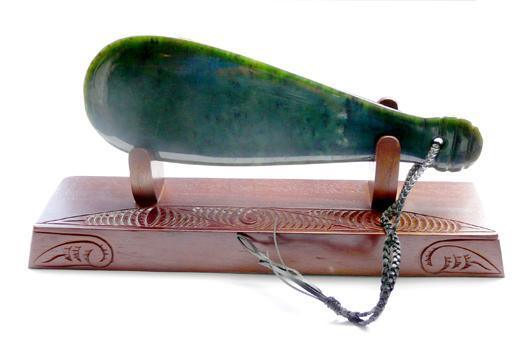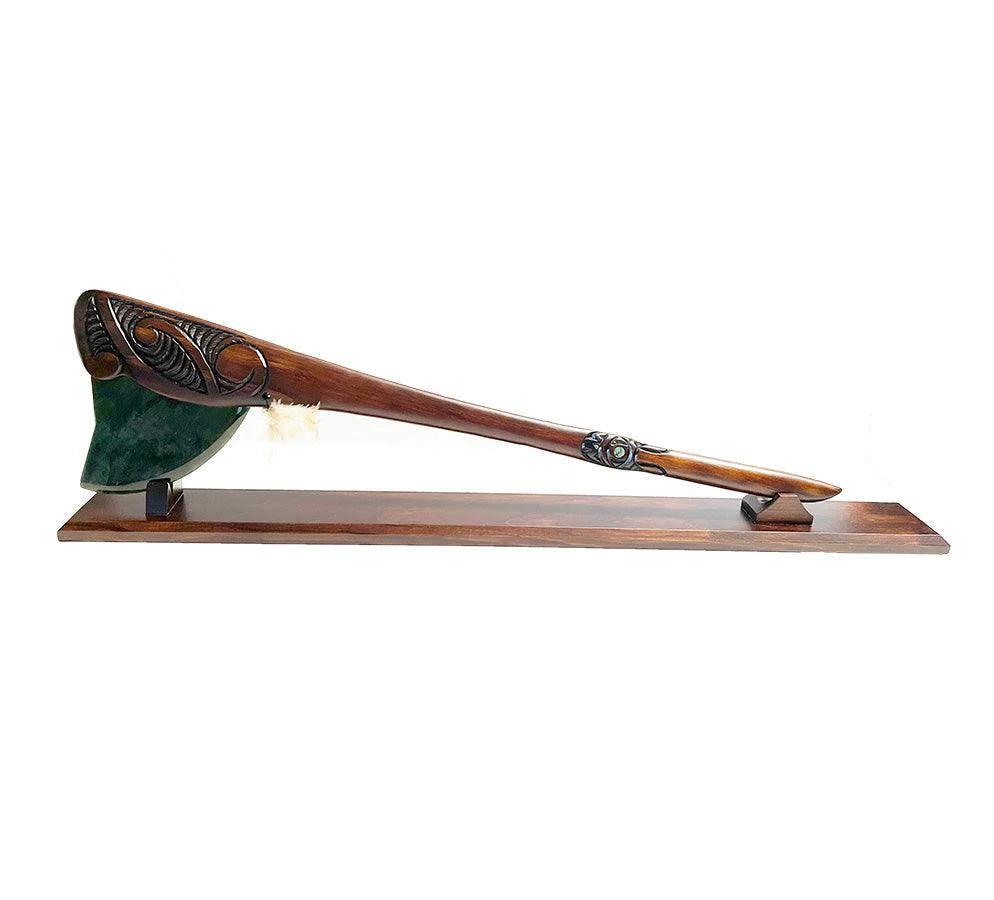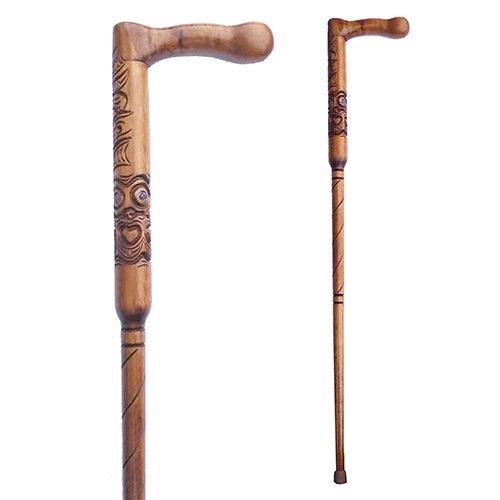Maori Culture Maori Culture
-
Wahaika Wahaika
The Maori Wahaika (pronounced wa-ha-eeka) is a pre-European club used in close combat. The word translates to "mouth of the fish", which relates to the notch on one side of the club. Wahaika were made from either whalebone or wood. They usually had a concave back, with the notch in the middle, the butt carved in the form of a head (usually with a paua...The Maori Wahaika (pronounced wa-ha-eeka) is a pre-European club used in close combat. The word translates to "mouth of the fish", which relates to the notch on one side of the club. Wahaika were made from either whalebone or wood. They usually had a concave back, with the notch in the middle, the butt carved in the form of a head (usually with a paua... -
Kotiate Kotiate
The Kotiate (pronounced courtee-ah-teh) was a pre-European Maori weapon (club) used in close combat. Of particular note are the carved notches on each side of the flat blade. The notches were used in a ripping motion, possibly to rip an opponent's weapon out of their hands. Another theory comes from the meaning of the word kotiate, which translates to "cut the liver in half". ...The Kotiate (pronounced courtee-ah-teh) was a pre-European Maori weapon (club) used in close combat. Of particular note are the carved notches on each side of the flat blade. The notches were used in a ripping motion, possibly to rip an opponent's weapon out of their hands. Another theory comes from the meaning of the word kotiate, which translates to "cut the liver in half". ... -
Mere Pounamu Mere Pounamu
Mere pounamu, usually just called a mere, are the most highly prized Maori weapon. A form of patu, or club, the mere is prized for its weight, beauty and strength. Made from pounamu (greenstone), the weapon could take years to make, as the club had to hewn from boulders, which took a long time to break down and then carve with basic implements. ...Mere pounamu, usually just called a mere, are the most highly prized Maori weapon. A form of patu, or club, the mere is prized for its weight, beauty and strength. Made from pounamu (greenstone), the weapon could take years to make, as the club had to hewn from boulders, which took a long time to break down and then carve with basic implements. ... -
Tewhatewha Tewhatewha
The tewhatewha is a Maori two-handed weapon not seen as much as patu and taiaha during battle, but still considered an important weapon, particularly in the hands of chiefs. It was often used by chiefs in battle to signal to their warriors, much like a flag. The head of the tewhatewha is called the rapa. It looks a bit like an axe head, but was not...The tewhatewha is a Maori two-handed weapon not seen as much as patu and taiaha during battle, but still considered an important weapon, particularly in the hands of chiefs. It was often used by chiefs in battle to signal to their warriors, much like a flag. The head of the tewhatewha is called the rapa. It looks a bit like an axe head, but was not... -
The History of the Tokotoko The History of the Tokotoko
The Tokotoko, or ceremonial carved Walking Stick, are generally carried by those who have authority to speak on the Marae (Meeting House). Those who carry a Tokotoko are usually of importance or high rank within a tribe. The carving on a Tokotoko may represent a legend or ancestor and was passed down through the generations, normally given to the next in line and...The Tokotoko, or ceremonial carved Walking Stick, are generally carried by those who have authority to speak on the Marae (Meeting House). Those who carry a Tokotoko are usually of importance or high rank within a tribe. The carving on a Tokotoko may represent a legend or ancestor and was passed down through the generations, normally given to the next in line and...







